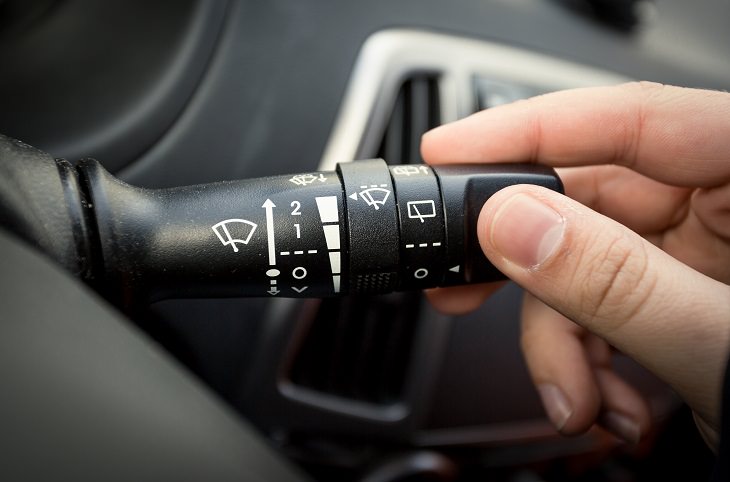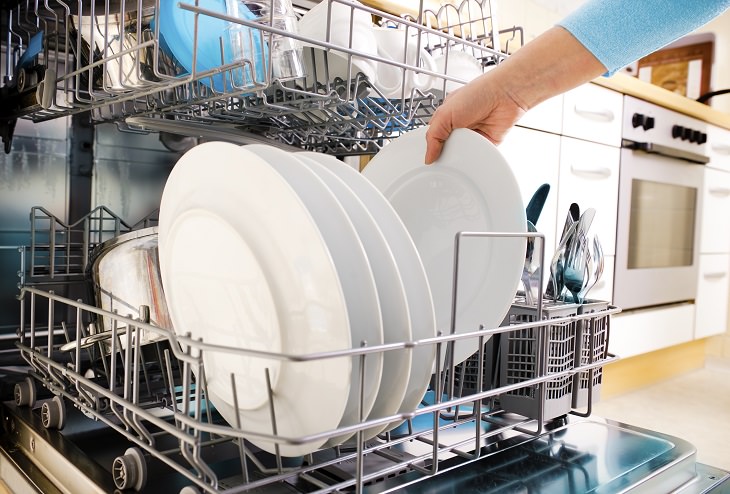
When asked to name important inventors you might start off with Alexander Graham Bell, Leonardo da Vinci, or Thomas Edison. You probably wouldn’t mention Ada Lovelace or Josephine Cochran. You might never have heard of them, but they are just two of the female inventors behind everyday objects and scientific innovations.
Below you’ll find 12 inventions we wouldn’t have today if it weren’t for these ground-breaking women.

Born in 1815, Ada Lovelace was the daughter of the poet Lord Byron, but it was her mother who encouraged her to pursue mathematics. When she was 17, she befriended inventor Charles Babbage, who is famous for being the “father of the computer.”
Translating a French article for her mentor, Lovelace added her own notes which were three times longer than the original article. Her work on how to code a computer (which hadn’t even been built at the time) to use letters and numbers was published in 1843, making her the first computer programmer in history.
During a visit to New York City, Alabama, Mary Anderson noticed a trolley driver couldn’t see well when it was snowing. At this point in time, drivers had to open the window to clear it, letting snow and rain into the vehicle. As a solution, Anderson designed and patented wood and rubber arms that would push rain and snow off the window at the pull of a lever. She was told that her 1903 invention was distracting and impractical and she never profited from her design.

As the first film actress to be named publicly, Canadian-born Florence Lawrence is widely considered to be the world’s first movie star. However, her contributions to the world go way beyond the big screen. Lawrence was an auto aficionado and designed the first turn signal, which raised arms on the car’s fender at the push of a button. She also designed a brake signal that lowered and raised when the driver hit the brakes, though she never patented either of these inventions.
Born in 1866, Elizabeth Magie was influenced by Henry George’s 1879 book, Progress and Poverty, which argued that only land should be taxed, meaning rich landowners would pay the most. Hoping to prove that unchecked capitalism makes the poor poorer and the rich richer, Magie patented The Landlord’s Game in 1904.
Players had two options of rules: One rewarded all the players when anyone made money, while the other had the goal of running other players dry. Magie hoped that it would be clear that the anti-Monopoly choice was best – during the game and in real life.
Unfortunately for Magie though, an unemployed man named Charles Darrow ripped off her idea in the 30s and sold Monopoly to Parker Brothers, making millions in the process. She called Darrow out for plagiarism, but only ever received $500 in compensation.

Josephine Cochrane was the socialite daughter and great-granddaughter of a civil inventor and engineer. Her servants would constantly chip the dishes while washing them, so she took it upon herself to find a gentler way to clean them.
She created a motor-powered dishwasher in a shed behind the house, and received a patent in 1886. She founded a company to manufacture the machines, which were initially sold to restaurants and hotels rather than households.
Without a special coating, glass is hard to see through because it causes a glare when light hits it. Enter Katharine Burr Blodgett, who in 1926 became the first woman ever to be rewarded a physics Ph.D. from Cambridge.
Working as a research scientist for General Electric, she discovered a method for building up thin layers of soap film on glass, then realized that her films could help to cancel out virtually all the glare on a piece of glass. In 1938, she received a patent for her “invisible glass.”

As a nurse in the 60s, Marie Van Brittan Brown had a conflicting work schedule with her husband, an electronic technician. Feeling uncomfortable at being left home alone in Queens, Van Brittan Brown enlisted her husband to help her create a security system.
Together, they patented a system with a camera that would scan the area around the house and send a live video to a TV inside. Furthermore, two-way audio equipment would let the homeowners talk to visitors, while a radio could unlock the door or send an alarm to a police officer.
The first paper bags were similar to envelopes or cones, and they couldn’t stand upright. Inventor Margaret Knight designed a machine that would fold paper bags with flat bottoms – but Charles Annan stole and patented that design without giving her credit.
The female inventor entered a legal battle with Annan and earned her own patent in 1871.

While Francis Crick and James Watson are attributed with the discovery of the spiral-like double-helix structure of DNA, it was actually a woman who paved the way to these findings. English physical chemist Rosalind Franklin, PhD, designed a machine that took a photo showing clear evidence of the shape of DNA in 1952.
Unfortunately for Franklin, her colleague Maurice Wilkins showed the photo to Crick and Watson, and their work with it was published in 1953. Franklin died of ovarian cancer in 1958, before she could find out that Crick and Watson won the 1962 Nobel Prize.
There were no coffee makers in the early 1900s, so home baristas would make coffee simply by pouring hot water over a cloth bag of coffee grounds, which usually left grounds in the cup.
To improve the quality, German housewife Melitta Bentz poked holes in a pot, then placed a piece of blank blotter paper from her son’s workbook inside. When she poured hot water over the grounds on the paper, Bentz realized that she’d stumbled across a great system. Not only did the grounds stay out of the cup, but the coffee brewed quickly and tasted better.
In 1908, she created her own company, Melitta, which now sells coffees, filters, coffeemakers, and more.

Two male inventors – Charles Gabriel Pravaz of France and Alexander Wood of France – independently created the first fine-needle syringes usable on humans in the early 1850s. Earlier syringes required two hands, meaning that a patient couldn’t self-administer.
In 1899, Letitia Mumford Geer received a patent for a syringe that patients could safely hold in place while pressing the handle to administer the drug, which at that time went into the rectum.
The daughter of Italian immigrants, Rose Totino wanted to open up a pizza shop in Minneapolis. Legend has it that she convinced the bank to give her a loan by baking them a pizza. It worked, and Totino and her husband opened a take-away pizza shop in the 1950s.
They later expanded to a sit-down restaurant, then started offering frozen pizzas for their customers to bake themselves at home. By 1962, they were mass-producing these products. Totino later sold her business to Pillsbury and became the company’s first female corporate vice president. With the company, she perfected her recipe, and her fried freezer-to-oven crust recipe earned a patent in 1979.
Source: rd
Images: depositphotos
Related Articles:
A Brief History of the East India Company
Inspiring Stories of Garage Start-Ups